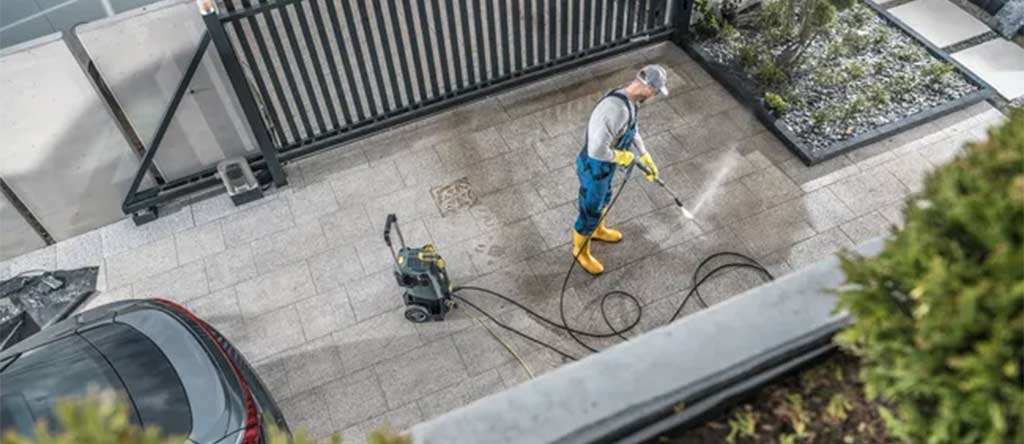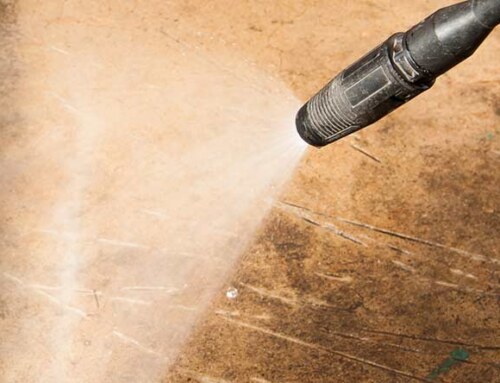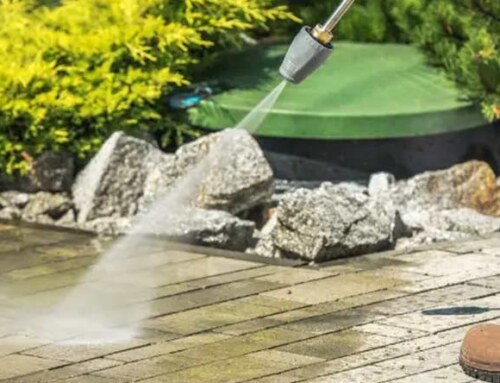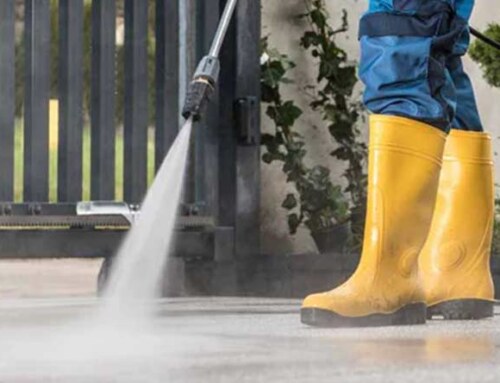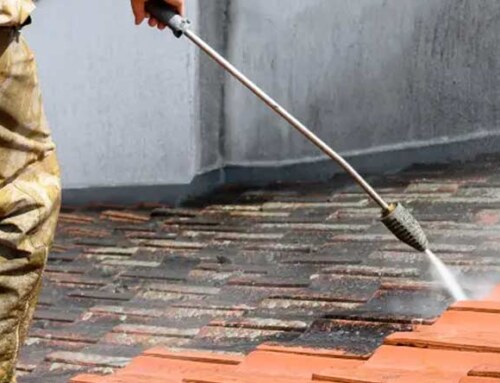Pressure washing can be a double-edged sword for your concrete surfaces. While it’s an efficient way to blast away dirt and grime, using too much pressure or improper techniques could damage the concrete. Thus, it should always be used with caution and by professionals if you are looking to pressure wash a concrete surface.
The Power Behind Pressure Washing
Pressure washers generate a high-pressure stream of water, which gives them their cleaning power. This power can be adjusted, but when used improperly, such force can indeed damage various materials, including concrete.
Concrete, although durable, is porous and can sometimes be surprisingly delicate. The surface can wear down if subjected to excessive pressure. This wear and tear can appear as follows:
- Erosion of the surface layer: Over time, repeated pressure washing can erode the concrete surface, making it rougher and more susceptible to further damage from the elements.
- Etching and pitting: If the water pressure is too high or the wrong nozzle is used, etching and pitting can occur, marring the smooth finish of your concrete. This damage is not just aesthetic; it can also exacerbate wear over time.
- Exposure of aggregate: High-pressure washing can strip away the cement paste, exposing the underlying aggregate, which can give a speckled appearance and potentially weaken the structure.
Factors That Influence Potential Damage
The most crucial factor is the pressure setting on your washing machine. Home-use pressure washers can generate pressures from 1,000 to 3,000 PSI (pounds per square inch). A lower PSI setting, around 2,500 PSI, is generally safe for most concrete surfaces. Going above 3,000 PSI risks significant damage.
Nozzles control the spray’s angle and intensity. A 0-degree nozzle creates a concentrated, high-pressure stream that can be very damaging. Conversely, a 25- —to 40-degree nozzle spreads the water across a broader area, reducing pressure and minimizing the risk of damage.
| Nozzle Type | Spray Angle | Pressure Level | Potential Damage |
| 0-degree | 0 degrees | Very High | Very High |
| 15-degree | 15 degrees | High | High |
| 25-degree | 25 degrees | Moderate | Low |
| 40-degree | 40 degrees | Low | Very Low |
How close you hold the pressure washer to the concrete surface also matters. Too close, and even a lower pressure setting, can cause significant damage. A safe distance is typically around 12 inches from the surface, but this can vary depending on the washer’s PSI and the nozzle used.
Older or poorly cured concrete is more susceptible to damage. A gentler cleaning method or professional assessment might be necessary if your concrete is cracked, flaking, or otherwise compromised.
Best Practices When Pressure Washing Concrete Surfaces
Understanding the risks is the first step; the next is implementing best practices to ensure your concrete remains intact and pristine.
Always start with the lowest effective pressure setting. You can adjust upwards if necessary, but starting too high increases the risk of damage.
Avoid using a 0-degree nozzle on concrete. Instead, opt for a 25-degree or 40-degree nozzle. These types offer sufficient cleaning power while minimizing the risk of surface damage.
Could you keep the pressure washer’s nozzle at least 12 inches from the concrete surface? If you need more cleaning power, gradually decrease the distance, but never get too close.
Before you start pressure washing the entire surface, test the pressure and nozzle on a small, inconspicuous area. This test can help you gauge if the settings are adequate without causing visible damage.
Klein Pressure Washing offers professional power washing contractors to deliver the best pressure washing services without damaging your structure. This ensures that your concrete is cleaned and undamaged.
Do You Need Chemicals to Clean Concrete Surfaces?
While pressure washing alone is often sufficient to remove most dirt and grime, adding chemicals can sometimes be beneficial. However, using chemicals comes with its considerations.
You can use various cleaning agents designed specifically for concrete:
- Detergents: Mild detergents can help lift dirt and grime without damaging the surface.
- Degreasers: A degreaser can break down the grease for oily stains, making it easier to wash away.
- Mold and Mildew Removers: If your concrete has mold or mildew, these specialized cleaning agents can kill the spores and help prevent regrowth.
If you decide to use chemicals, apply them before pressure washing. Let them sit for the recommended time to break down contaminants, then rinse thoroughly with the pressure washer. Please use eco-friendly products to avoid harming surrounding plants and waterways.
| Cleaning Agent | Purpose | Application Method |
| Detergents | General cleaning | Apply with a scrub brush, then pressure wash |
| Degreasers | Remove oil and grease stains | Apply, let sit, and wash off thoroughly |
| Mold and Mildew Remover | Kill mold spores | Spray on, let sit, then rinse with water |
Concern about whether pressure washing can damage concrete is legitimate. Though it’s a highly effective cleaning method, inappropriate use can result in unwanted consequences. Following best practices, such as using appropriate pressure settings, selecting the correct nozzle, and maintaining a safe distance, can help protect your concrete surfaces from damage.
If you’re unsure how to safely pressure wash your concrete or if you need professional assistance, don’t hesitate to contact the experts at Klein Pressure Washing. We possess the knowledge and equipment to handle your pressure washing needs with the utmost care.
